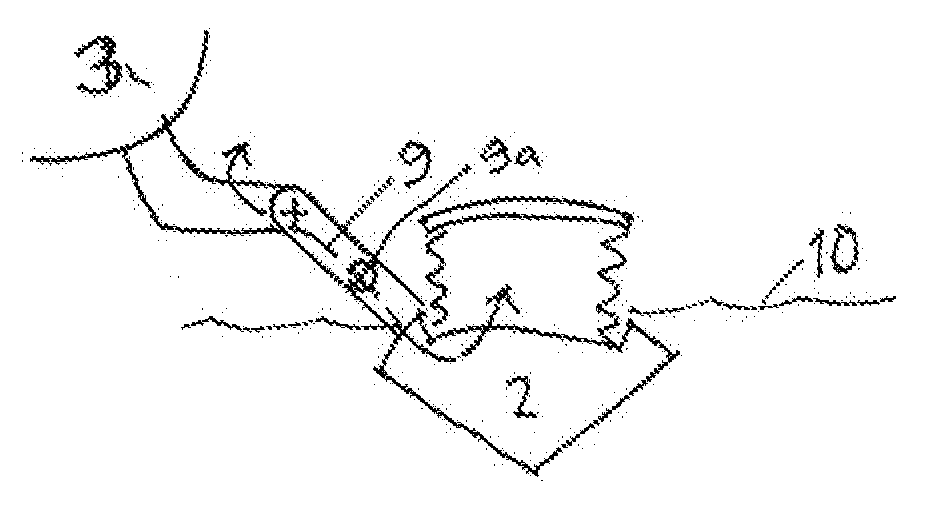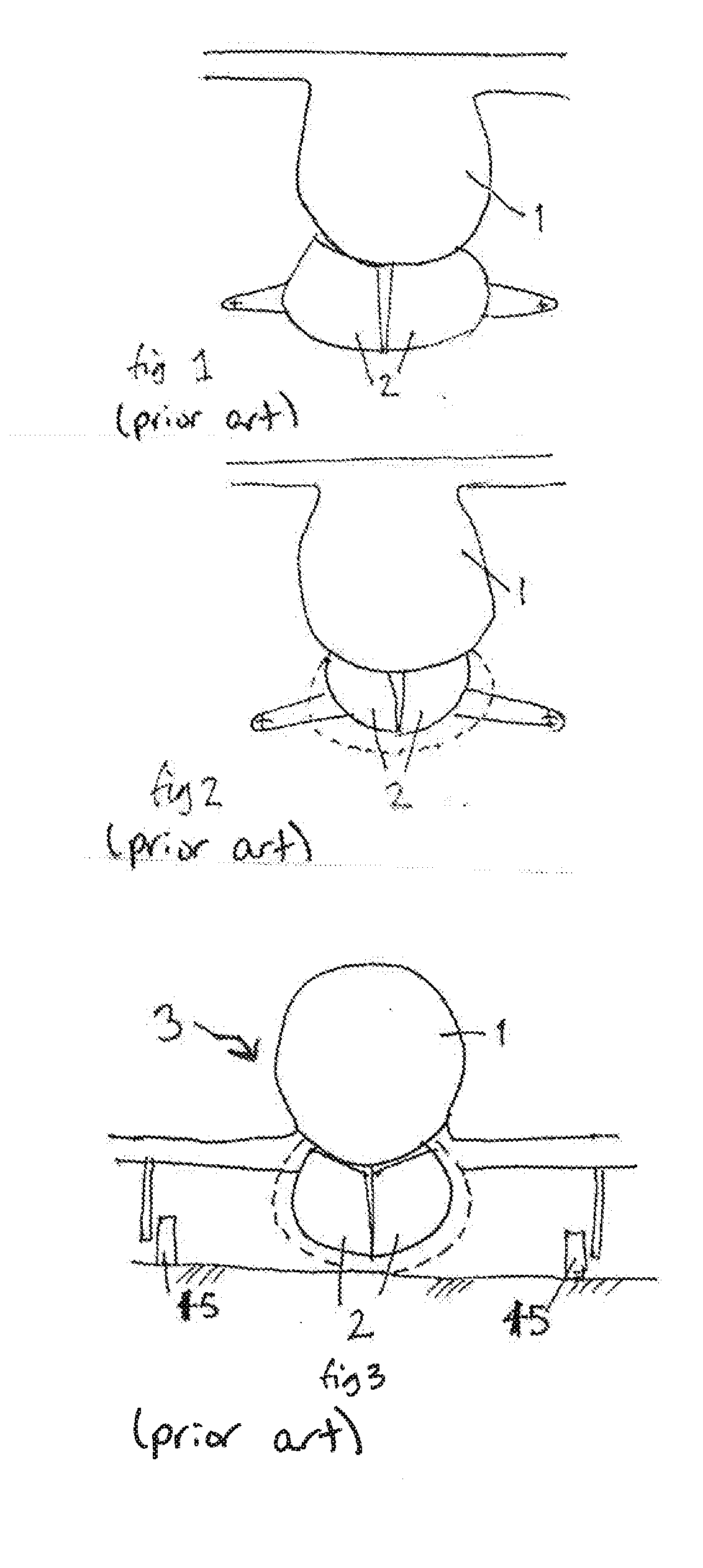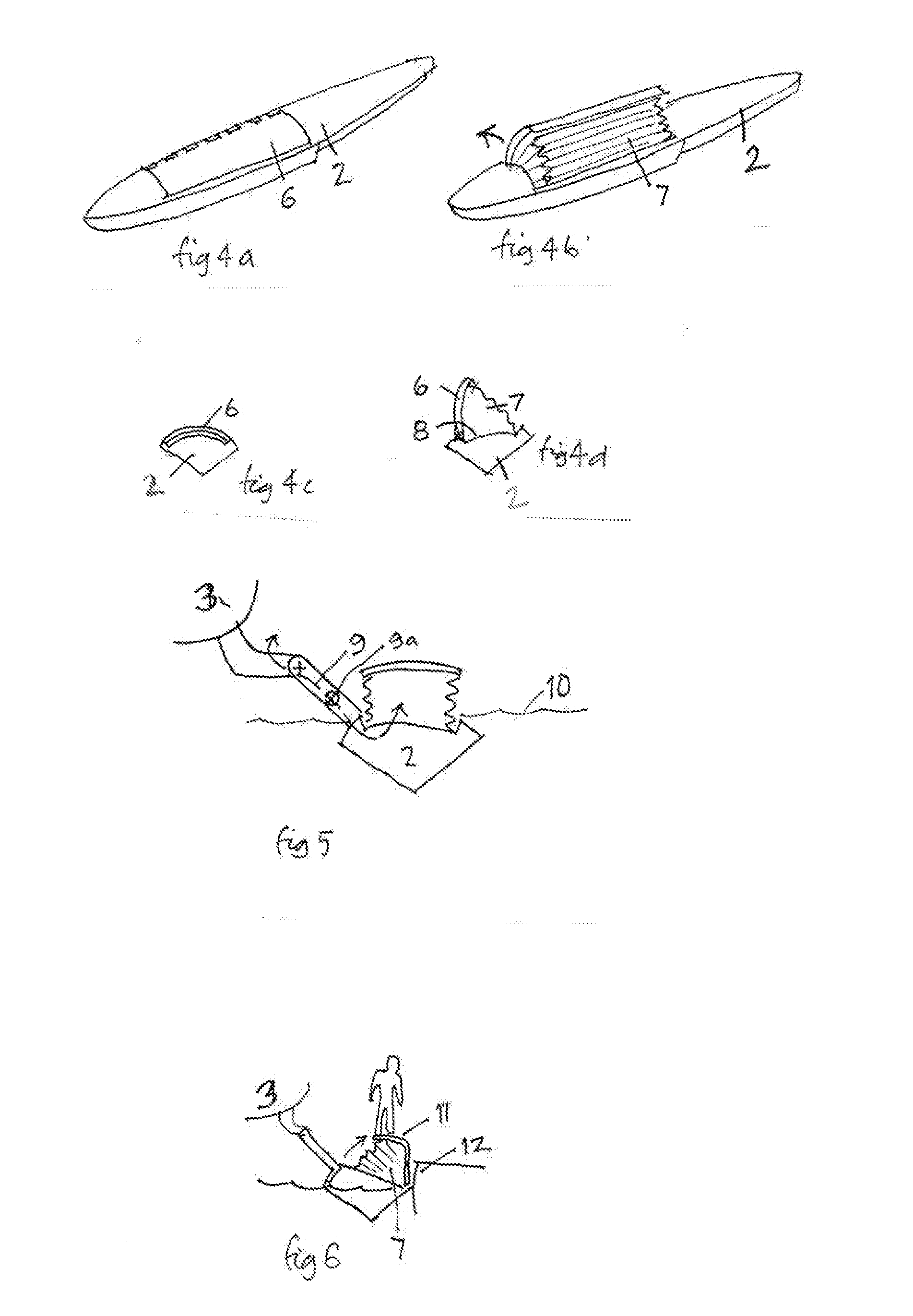Aircraft Floats
a technology of aircraft and floats, which is applied in the direction of floats, seaplanes, convertible alighting gear, etc., can solve the problems of reducing payload, fuel consumption, and high air drag of floats and wheels fitted to floats, so as to reduce the loss of lift from the wing, improve flight effect, and improve flight
- Summary
- Abstract
- Description
- Claims
- Application Information
AI Technical Summary
Benefits of technology
Problems solved by technology
Method used
Image
Examples
Embodiment Construction
[0055]Turning to FIGS. 4a-7a, this invention relates to an improved float for use with an aircraft 3 having water landing capabilities having at least one float 2 capable of increasing / decreasing its volume arranged to at least substantially support said aircraft 1 in a floating on water status so that the fuselage of the aircraft 3 is substantially above the water 10. The float 2 has at least one hinged panel 6 that when opened reveals at least one bag 7 capable of being inflated to a desired volume.
[0056]FIGS. 4a-6 relate to a float 2 having a longitudinally hinged panel 6 that when opened reveals a bag 7 as seen in FIG. 4b. This panel is opened by a geared motor or other mechanical means (not shown). The bag 7 is a flexible bag that is attached to the underside of the panel 6 and the top of a rebate 8. As the panel 6 is opened, the volume of the float 2 can increase from 120% of the required volume to 180%, which is the volume typically needed for the floats to be operation in wa...
PUM
 Login to View More
Login to View More Abstract
Description
Claims
Application Information
 Login to View More
Login to View More - R&D
- Intellectual Property
- Life Sciences
- Materials
- Tech Scout
- Unparalleled Data Quality
- Higher Quality Content
- 60% Fewer Hallucinations
Browse by: Latest US Patents, China's latest patents, Technical Efficacy Thesaurus, Application Domain, Technology Topic, Popular Technical Reports.
© 2025 PatSnap. All rights reserved.Legal|Privacy policy|Modern Slavery Act Transparency Statement|Sitemap|About US| Contact US: help@patsnap.com



